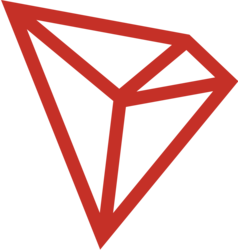Blog
Mastering the Virtual Mining Rig Landscape: A Comprehensive Guide to Cryptocurrency Mining in 2024

As cryptocurrencies like Bitcoin, Ethereum, and Litecoin continue to shape global finance, the concept of virtual mining rigs has emerged as a dynamic intersection of technology, economics, and innovation. Virtual mining—conducting cryptocurrency mining operations through digital platforms—has transformed what was once an expensive, equipment-heavy niche into an accessible investment opportunity. This article explores the mechanics, risks, benefits, and ethical implications of virtual mining rigs, aiming to provide readers with a clear framework to evaluate their potential role in the cryptocurrency ecosystem.

1. What Are Virtual Mining Rigs?
A virtual mining rig is a digital representation of a physical mining setup used in blockchain networks like Bitcoin or Ethereum. Unlike traditional crypto mining, which requires physical hardware (e.g., ASIC miners for Bitcoin), virtual mining allows users to participate in mining activities via cloud-based platforms, pooled computing resources, or hosted mining services.
Key Components of Virtual Mining Rigs:
- Cloud Mining Contracts: Platforms like Genesis Mining or Hashflare offer pre-paid contracts where users purchase hash power on remote servers.
- Pooled Mining: Joining pools (e.g., Slush Pool, F2Pool) to combine computational power with other users, splitting rewards proportionally.
- Hosted Mining Services: Companies maintain hardware physically, charging users for hash rate access.
These models allow users to bypass the upfront costs and logistical challenges of owning hardware while participating in mining.
2. How Do Virtual Mining Rigs Work?
The Mining Process:
Virtual mining operates similarly to traditional methods but averages computational power acrossmany users. When you invest in a virtual rig, your contribution of hash power helps solve complex cryptographic puzzles, validating transactions and securing the blockchain. Successful mining rewards users with cryptocurrency (e.g., Satoshi for Bitcoin) proportional to their hash rate contribution.
Critical Variables Influencing Profitability:
- Hash Rate: The processing power (in hashes/sec) allocated to your virtual rig.
- Energy Costs: While users avoid direct electricity expenses, platforms factor energy costs into contract pricing.
- Blockchain Difficulty: Mining difficulty dynamically adjusts based on network activity, affecting reward per hash rate.
- Cryptocurrency Price Volatility: Rewards are paid in crypto; prices can swing 10-20% daily, impacting ROI.
3. Advantages of Virtual Mining Rigs
Cost Efficiency
Physical mining hardware, such as ASIC miners for Bitcoin, costs 5,000–5,000–20,000 upfront, excluding electricity and cooling costs. Virtual rigs eliminate these expenses by outsourcing infrastructure to providers.
Example: A $500 cloud mining contract might provide 10 TH/s for Bitcoin, whereas purchasing hardware would cost 10x as much while requiring physical space and maintenance.
Accessibility and Scalability
Users with minimal technical expertise can participate. Platforms offer flexible contracts—renting 5 PH/s for Ethereum GPUs or scaling down to 1 TH/s for niche coins.
Risk Mitigation
Shared risk via mining pools reduces reliance on individual luck (a single rig might take centuries to mine a block alone). Virtual platforms also automate tasks like protocol updates and wallet management.
Diversification
Investors can spread assets across different cryptocurrencies (e.g., Bitcoin via cloud, Ethereum through pools, or ALGO on hosted hardware).
4. Risks & Challenges in Virtual Mining
Regulatory and Security Risks
- Fraudulent Platforms: Unregulated vendors may vanish overnight, taking payments without fulfilling contracts.
- Compliance Issues: Some countries (e.g., China, Algeria) have banned virtual mining entirely, risking potential asset seizure.
- Hacking Threats: Centralized platforms pose single points of failure; exchanges like BitConnect collapsed under Ponzi schemes disguised as mining contracts.
Market Volatility
Crypto prices can crater unpredictably. For instance, Bitcoin’s 60𝑘𝑑𝑟𝑜𝑝𝑡𝑜60kdropto30k in 2022 doomed many marginal mining operations.
Diminishing Returns
Over time, network hash rates rise (e.g., Bitcoin’s difficulty increases ~3% monthly), squeezing profits as competition intensifies.
Contract Termination Fees
Many platforms penalize early withdrawal (e.g., 30-day lock-in periods or cancellation penalties).
5. Market Outlook: Trends in Virtual Mining
Spreading Regulatory Oversight
Countries like El Salvador and Kazakhstan have legalized and taxed mining, whereas the EU may classify crypto as taxable income. Investors must track jurisdictional shifts.
Energy Efficiency Technology
Newer mining rigs (e.g., Bitmain Antminer S19 XP) use 54 J/TH, halving power vs. older models. However, virtual platforms rarely allow users to select energy-efficient hardware.
DeFi-Based Mining Platforms
Decentralized Finance introduces permissionless pools or yield farming integrations. For example, participating in Liquidity Mining on Uniswap offers crypto rewards without traditional mining.
Niche Coins and Self-Serving Algorithms
“ASIC-resistant” coins like Ethereum PoS or Solana (GPU-friendly) gain traction, widening opportunities for diversified investment.
6. Practical Tips for Investors
Research Reputable Platforms
Prioritize legally registered companies with public audits (e.g., Compute North, Hut8 Mining Corp) over unlisted startups. Red flags include:
- Unusually high promised ROIs (> 100% annually).
- No mention of electricity/source costs.
Adopt Dollar-Cost Averaging
Avoid lump-sum investments. Spread contract purchases over months to mitigate price volatility (e.g., buy $200/month).
Monitor Real-Time Profitability
Use tools like WhatToMine or CryptoCompare to track daily returns. Close contracts if projections drop below 10% annualized.
Diversify Beyond Mining
Include mined crypto in broader strategies—HODLing, staking, or DeFi lending—rather than relying solely on mining.
7. Ethical Considerations & Sustainability
Virtual mining’s environmental impact mirrors physical mining. Studies show Bitcoin’s energy consumption rivals entire nations (e.g., ~120 TWh/year, equal to Argentina). Advocates argue this secures global financial systems, while critics call for greener alternatives like solar-powered mines or algorithm upgrades.
8. The Future of Virtual Mining Practices
By 2025, decentralized autonomous organizations (DAOs) may democratize equipment ownership, enabling investor-operated mining farms via blockchain governance. Meanwhile, Ethereum’s shift to Proof-of-Stake (PoS) has reduced its energy demand by 99.95%, hinting at a broader industry shift toward sustainable consensus models.

Conclusion
Virtual mining rigs represent a gateway to cryptocurrency’s backbone—mining—but success requires vigilance. Their ease of access and scalability make them ideal for newcomers learning blockchain mechanics. However, long-term viability demands proactive risk management, relentless platform scrutiny, and a skeptical view of overpromising contracts.
As the sector matures, only platforms transparently disclosing energy sources, hash rate availability, and compliance processes will survive regulatory scrutiny. For now, virtual mining remains a high-risk, high-reward endeavor—best approached as a optional piece within an diversified crypto portfolio.
Final Thought: In an industry built on decentralization, the irony is unavoidable: virtual mining’s reliance on centralized providers creates its greatest vulnerability. A future where decentralized virtual mining networks (powered by peer-to-peer node networks) emerges could redefine the landscape entirely.

































